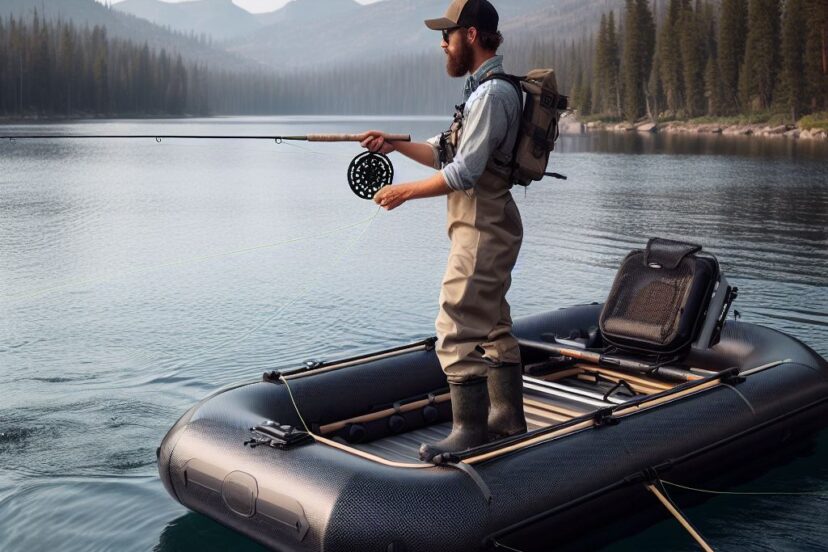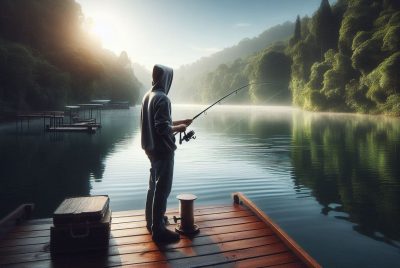Fly Fishing Raft Essentials: Tips and Gear for Success
*We may earn a commission for purchases made using our links. Please see our disclosure to learn more.
Fly Fishing Raft: Navigating the Waters with Ease
As an avid fly fishing enthusiast and advisor, I have explored various aspects of this exhilarating sport. One method that has continually captivated my attention is fly fishing from a raft. It offers a unique way to access pristine waters and reel in trophy catches. In this article, we’ll delve into the world of fly fishing rafts, discussing the different types, the gear you need, techniques for success, and much more.
Fly fishing from a raft is a fusion of adventure and angling. It allows you to traverse the waters, casting your line where fish are abundant. The tranquility and excitement it offers are unmatched. Let’s embark on this journey together.
Fly Fishing Raft: The Types
Inflatable Rafts
Inflatable rafts are a popular choice for fly fishing due to their portability and stability. They’re easy to transport and can navigate various water conditions.
Drift Boats
Drift boats, on the other hand, are hard-shelled watercraft, offering a more traditional approach to fly fishing. They provide an exceptional platform for fishing in both calm and swift waters.
Raft Materials
When selecting a raft, consider the material used in its construction. PVC and Hypalon are common choices, each with its own advantages. PVC rafts are cost-effective, while Hypalon rafts are highly durable.
Selecting the Right Fly Fishing Raft
Considerations for Beginners
If you’re new to raft fishing, opt for an inflatable raft as it’s forgiving and easy to handle. Look for stability and a manageable size.
Advanced Options for Experts
For experienced anglers, drift boats are a great choice. They offer precise control and are ideal for challenging river environments.
Fly Fishing Raft: Essential Gear and Accessories
To succeed in fly fishing from a raft, you need the right gear.
Fly Rods and Reels
Select a fly rod and reel combination that suits your fishing style and the water you’ll be navigating. Weight-forward lines are versatile for raft fishing.
Flies and Lines
Carry a variety of flies and lines to adapt to different conditions and species. Dry flies, nymphs, and streamers are essentials in your arsenal.
Personal Gear
Protect yourself from the elements with appropriate clothing, sunscreen, and sunglasses. You’ll also need a hat and footwear with good grip for raft stability.
Setting Up Your Fly Fishing Raft
Inflation and Assembly
Properly inflate your raft and assemble it according to the manufacturer’s instructions. This ensures safety and stability.
Proper Seating and Weight Distribution
Correct seating and weight distribution are crucial for raft balance. Distribute the load evenly to prevent capsizing.
Basic Fly Fishing Techniques in a Fly Fishing Raft
Navigating Water Currents
Understanding the water currents is vital for positioning your raft in the right spots. Mastering techniques for reading water is essential.
Fly Fishing Raft: Best Spots
Rivers
Raft fishing on rivers is an exciting adventure. Discover some of the best rivers for this purpose and the species you can target.
Lakes
Lakes also offer ample opportunities for raft fishing. Explore the tranquility of still waters while chasing your favorite fish.
Safety Precautions
Life Jackets and Safety Equipment
Safety should always be a priority. Wear a life jacket and carry essential safety equipment to protect yourself in case of mishaps.
Handling Rapid Waters
If you plan to navigate rapids, be well-prepared. Learn how to maneuver your raft through turbulent waters safely.
Caring for Your Fly Fishing Raft
Cleaning and Maintenance
Properly maintaining your raft ensures longevity. Clean and store it according to guidelines to prevent damage.
Storage Tips
Storing your raft in the off-season is crucial. Protect it from UV rays and extreme temperatures.
Benefits of a Fly Fishing Raft

Versatility
Using one opens up a world of possibilities, from calm lakes to wild rivers. You can adapt to various conditions effortlessly.
Access to Remote Areas
Raft fishing grants access to remote and less-fished areas, where fish populations thrive undisturbed.
Drawbacks and Challenges of Using a Fly Fishing Raft
Skill and Experience Requirements
Mastering this art requires practice. Expect a learning curve, especially if you’re new to the sport.
Weather Considerations
Inclement weather can pose challenges. Be prepared for sudden changes and know when it’s best to call it a day.
Fly Fishing Raft: Etiquette
Sharing Waterways
Respect other anglers and water enthusiasts. Give them space and maintain courteous behavior on the water.
Catch and Release Practices
Adhere to catch and release practices to preserve fish populations and the ecosystem.
Conclusion
Fly fishing from a raft is a remarkable way to connect with nature and enjoy the thrill of angling. It provides access to unspoiled fishing spots and unique adventures. Remember, safety, respect for the environment, and continual learning are keys to success in this pursuit.
FAQs About Your Fly Fishing Raft
- What’s the best time of year to go out? The best time depends on your location, but generally, spring and early summer offer ideal conditions with hatching insects and active fish.
- How can I transport my inflatable raft to fishing locations? You can transport inflatable rafts in the trunk of your car or with a roof rack. Some models even come with backpacks for easy carrying.
- What are the most common fish species to target when raft fishing? Depending on your location, trout, bass, salmon, and pike are commonly targeted species while fly fishing from a raft.
- Do I need a fishing guide for raft fishing, or can I go solo? While experienced anglers can go solo, hiring a guide can be beneficial, especially in unfamiliar waters, to enhance your chances of success.
- How do I choose the right size of an inflatable one? The size of your raft should be determined by the number of anglers and the type of water you plan to navigate. Larger rafts are more stable but can be harder to maneuver in narrow rivers.




